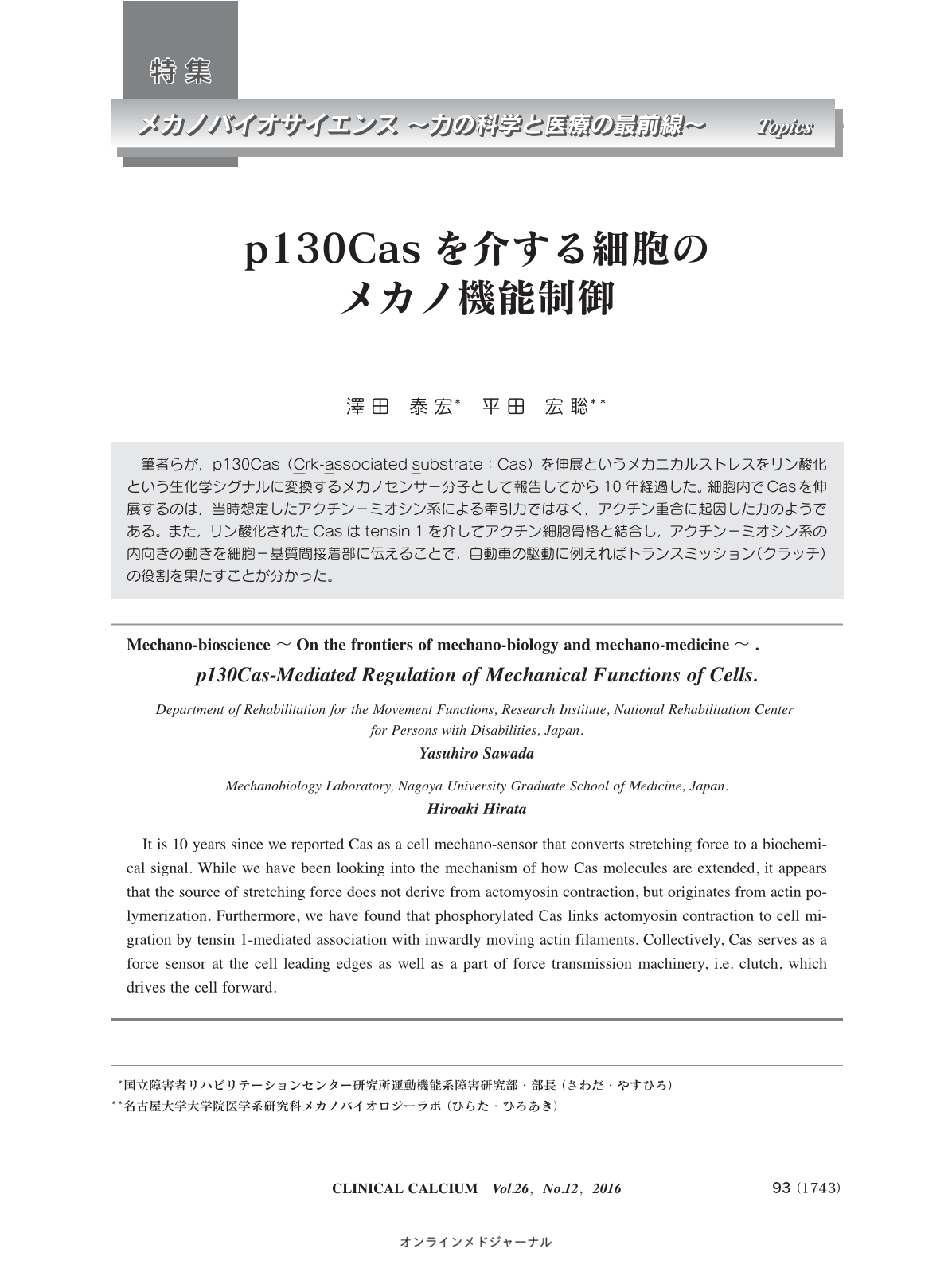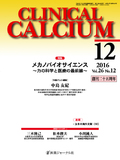Japanese
English
- 有料閲覧
- Abstract 文献概要
- 1ページ目 Look Inside
- 参考文献 Reference
筆者らが,p130Cas(Crk-associated substrate:Cas)を伸展というメカニカルストレスをリン酸化という生化学シグナルに変換するメカノセンサー分子として報告してから10年経過した。細胞内でCasを伸展するのは,当時想定したアクチン-ミオシン系による牽引力ではなく,アクチン重合に起因した力のようである。また,リン酸化されたCasは tensin 1を介してアクチン細胞骨格と結合し,アクチン-ミオシン系の内向きの動きを細胞-基質間接着部に伝えることで,自動車の駆動に例えればトランスミッション(クラッチ)の役割を果たすことが分かった。
It is 10 years since we reported Cas as a cell mechano-sensor that converts stretching force to a biochemical signal. While we have been looking into the mechanism of how Cas molecules are extended, it appears that the source of stretching force does not derive from actomyosin contraction, but originates from actin polymerization. Furthermore, we have found that phosphorylated Cas links actomyosin contraction to cell migration by tensin 1-mediated association with inwardly moving actin filaments. Collectively, Cas serves as a force sensor at the cell leading edges as well as a part of force transmission machinery, i.e. clutch, which drives the cell forward.



